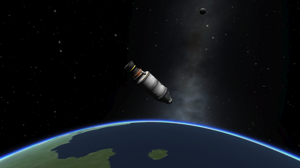I’ve been playing around with the Kerbal Space Program recently because (1) it’s fun and (2) I want to know enough to be able to help my kids during their post-AP project, at least from a technical / computer perspective. My mission — have a Kerbal walk on the moon (and return home safely).
The first step was designing the vehicle. I went with a one-man capsule, a small engine, and lots of extra fuel (to give me plenty of room for mistakes on my first landing mission.
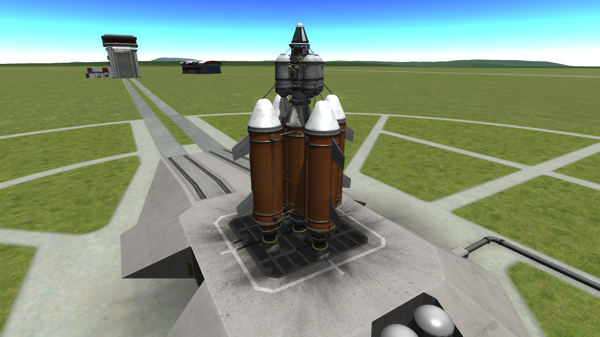
I made sure to add landing struts, a ladder to allow Jebediah a quick EVA, and, of course, a parachute for the command pod. The launch vehicle itself was designed in two stages, four large engines and fuel tanks to get the craft past 10 km, and another single large tank and engine to easily push into orbit, leaving the lander vehicle itself fully fueled in orbit.

The launch was very straightforward. I controlled the engines carefully under 10 km to keep the velocity below 200 m/s and avoid overheating. At 12 km I performed an orbital tilt to 45 degrees, got speed up, and then coasted to the highest point in the path, at which point I turned again on an orbital maneuver.
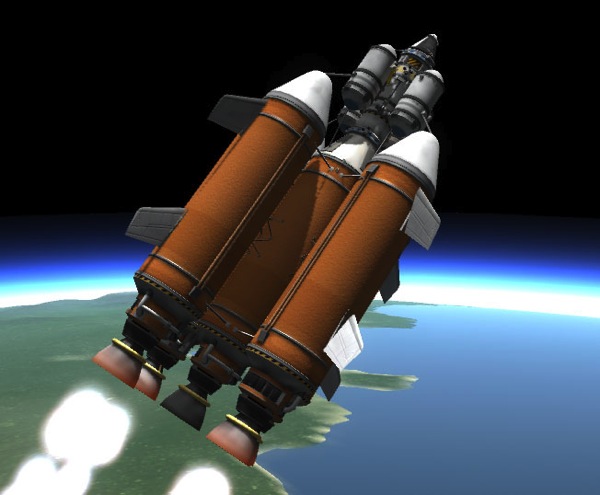
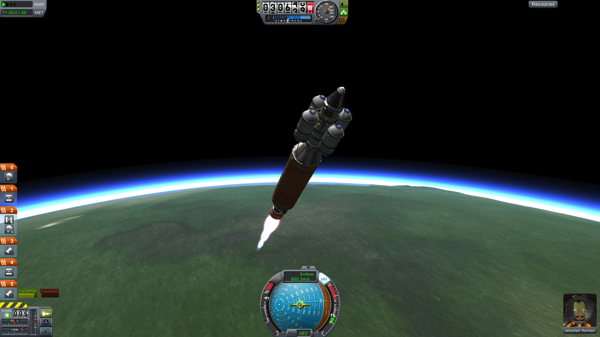
Separation was clean.
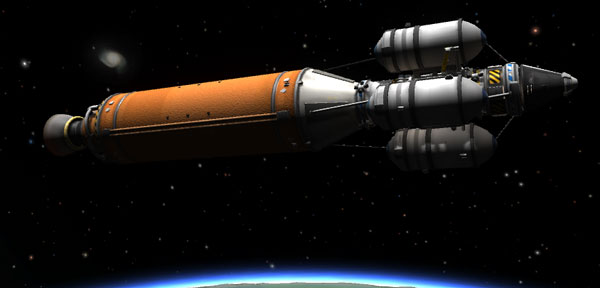
This left me with the landing craft fully fueled in a stable Earth orbit, ready to begin maneuvers to head to the Mun.
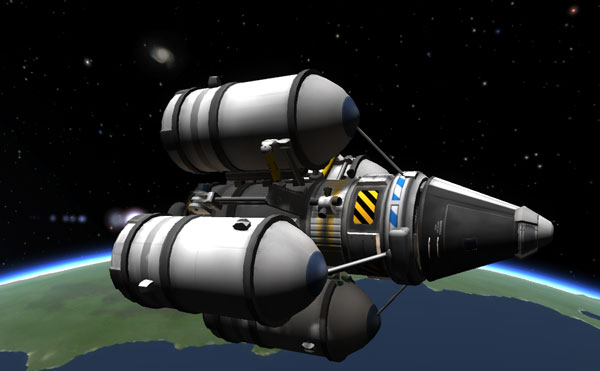
As I approached the moon I adjusted my orbit to bring me down near “the bright side,” and set my orientation to maintain a retrograde orbit.
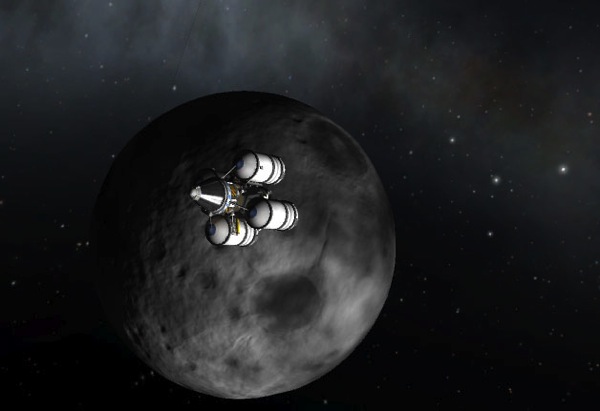
After a few minutes of sweating with a light hand on the thrusters while maintain a retrograde orbit, I finally had the lander down on the ground (and even remembered to extend the landing struts!)
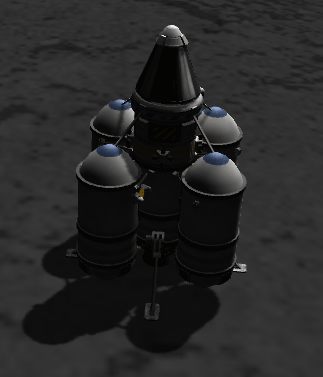
The external tanks were just barely empty (I hadn’t separated them during the descent as I thought perhaps the extra fuel might be nice for the Mun launch. However, upon reaching the surface, they were just barely drained. Easy quiet separation. Now for the EVA. I extended the ladders and Jebediah had himself a short stroll on the Mun before climbing back in for the trip home.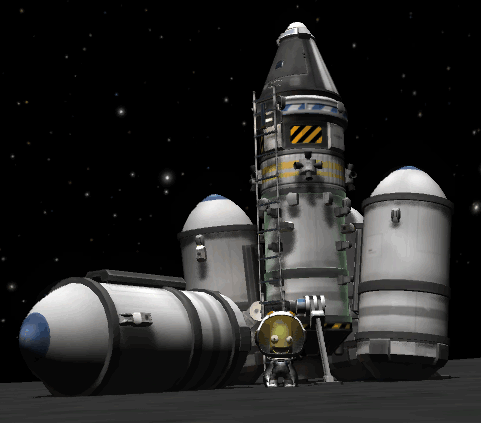
From there, a simple launch to get back into Mun orbit, then an orbital transfer back to Earth, which brought Jebediah down nice and safe and ready for his next mission!
Key Learning — having all that extra fuel was nice, but next time I could do things MUCH more efficiently at the landing stage, allowing me to launch a much lighter landing vehicle. Next challenge – Landing on Minmus and returning safely!


